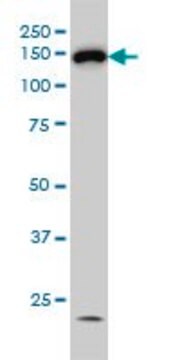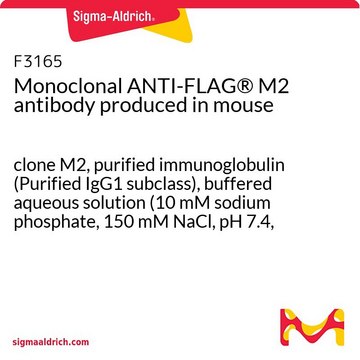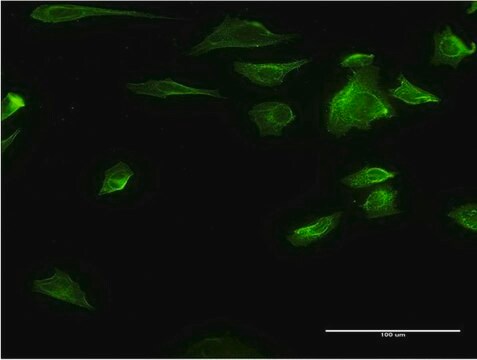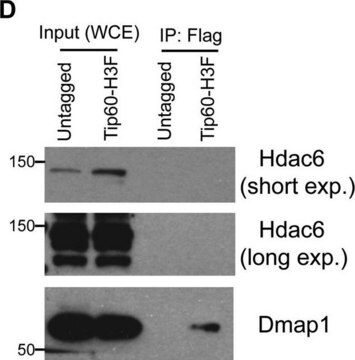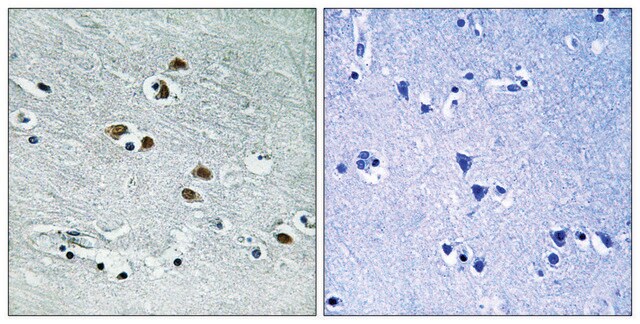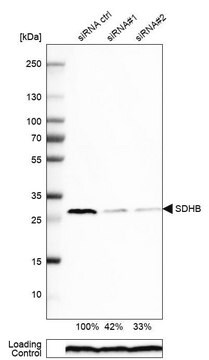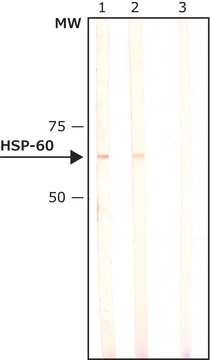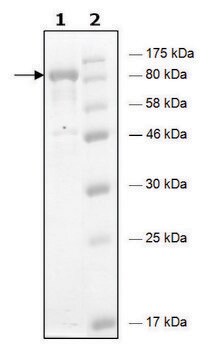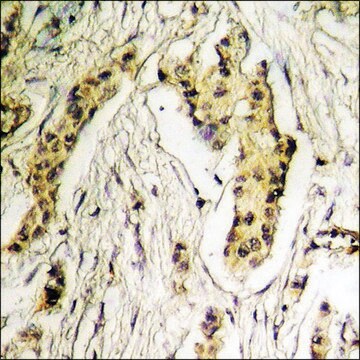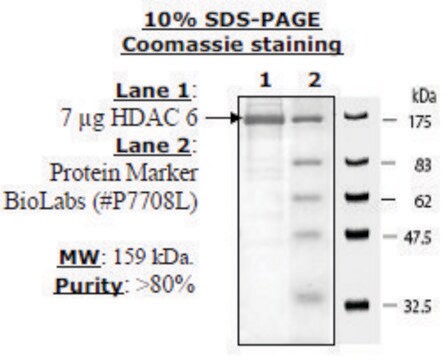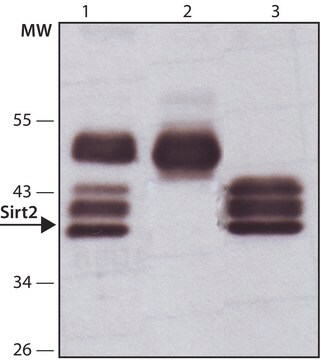H2287
Anti-Histone Deacetylase 6 (HDAC6) antibody produced in rabbit
IgG fraction of antiserum, buffered aqueous solution
Sinonimo/i:
Anti-CPBHM, Anti-HD6, Anti-JM21, Anti-PPP1R90
About This Item
Prodotti consigliati
Origine biologica
rabbit
Livello qualitativo
Coniugato
unconjugated
Forma dell’anticorpo
IgG fraction of antiserum
Tipo di anticorpo
primary antibodies
Clone
polyclonal
Stato
buffered aqueous solution
PM
antigen ~134 kDa
Reattività contro le specie
human, mouse
tecniche
immunoprecipitation (IP): 5-10 μg using RIPA extract of 500 μg of 293T cells expressing recombinant mouse HDAC6.
microarray: suitable
western blot: 1:1,000 using 293T cells expressing recombinant mouse HDAC6 in a chemiluminescent detection system.
N° accesso UniProt
Condizioni di spedizione
dry ice
Temperatura di conservazione
−20°C
modifica post-traduzionali bersaglio
unmodified
Informazioni sul gene
human ... HDAC6(10013)
mouse ... Hdac6(15185)
Descrizione generale
Specificità
Immunogeno
Applicazioni
Immunohistochemistry (1 paper)
Western Blotting (1 paper)
Azioni biochim/fisiol
Stato fisico
Esclusione di responsabilità
Non trovi il prodotto giusto?
Prova il nostro Motore di ricerca dei prodotti.
Scegli una delle versioni più recenti:
Possiedi già questo prodotto?
I documenti relativi ai prodotti acquistati recentemente sono disponibili nell’Archivio dei documenti.
I clienti hanno visto anche
Il team dei nostri ricercatori vanta grande esperienza in tutte le aree della ricerca quali Life Science, scienza dei materiali, sintesi chimica, cromatografia, discipline analitiche, ecc..
Contatta l'Assistenza Tecnica.